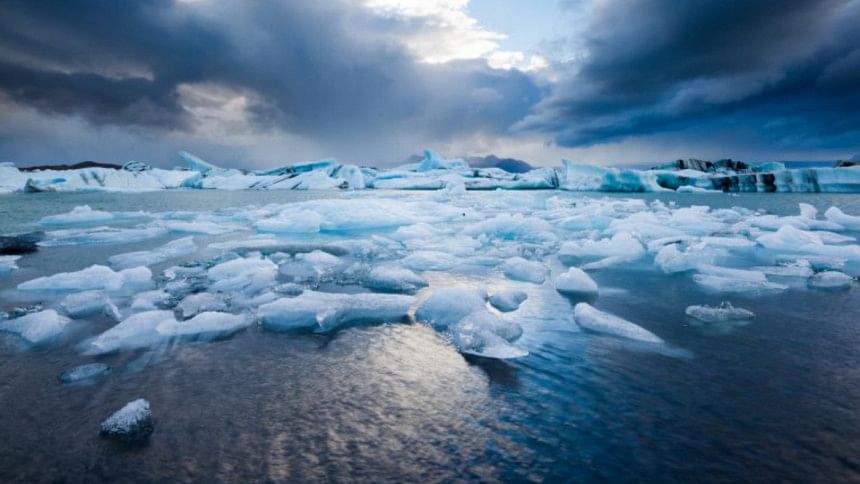Solar radiation management can help combat climate change

In the Environmental Physics course that I teach from time to time, a student once remarked that we really do not have to worry about the deleterious effects of climate change because technology would be able to solve all the problems we are facing. At that time, I thought this viewpoint is an extreme case of technological optimism. But today, as the likelihood of international consensus to stabilise atmospheric composition of greenhouse gases seems remote while the consequences of climate change are becoming more apparent and direr, many in the scientific community believe that the potential last-ditch effort to stave off the disastrous impacts of climate change is to appeal to technology, geoengineering in particular. Even the United Nation's Intergovernmental Panel on Climate Change considers geoengineering as a necessary Plan B if global warming does not show any signs of slowing.
Geoengineering is deliberate, large-scale manipulation of the Earth's environment to counteract anthropogenic climate change. It encompasses two different approaches using a variety of cutting-edge technologies to undo the effects of greenhouse gas emissions. They are removal and sequestration of carbon dioxide to lower its concentration in the atmosphere and offsetting global warming by targeting the overall amount of solar energy reaching the Earth. The removal technologies were discussed in an op-ed piece published in this newspaper on November 29, 2018.
Some of the offsetting options scientists are exploring are reflecting part of the sunlight back into space before it reaches the Earth's surface, allowing more of the heat trapped by the Earth's surface to escape into space, and increasing the reflectivity of roofs, Arctic ice, glaciers, pavements, croplands and deserts. Known as Solar Radiation Management (SRM), these options would slow down the rise in Earth's temperature until carbon dioxide emissions can be reduced enough to prevent catastrophic repercussions of human-driven climate change.
The fraction of incoming sunlight that is reflected back to space could readily be changed by increasing the reflectivity of the low-level clouds. This could be achieved by spraying seawater in the air where they would evaporate to form sea salt, which would seed the clouds above the oceans making them thicker and more reflective. Several simulations have confirmed that the seeding mechanism, also known as Marine Cloud Brightening, would work with the likelihood to lower temperatures at a regional level.
Another proposed cloud-based approach involves thinning the high-altitude Cirrus clouds in the stratosphere by injecting ice nuclei into regions where the clouds are formed. These wispy clouds do not reflect much solar radiation back into space, and instead trap heat in the atmosphere by absorbing thermal radiation emitted by the Earth. While this method is not technically an example of SRM, thinning Cirrus clouds would provide more pathways for the trapped heat to escape into space, and thus, potentially cool the Earth. Currently, work in this field is limited to theoretical studies at research institutions. However, research shows that a cooling of about one degree Celsius is possible by thinning the clouds globally.
Scientists have known for a long time that volcanic eruptions could alter a planet's climate for months on end, as millions of sunlight-reflecting minute particles (aerosols) are spread throughout the atmosphere. Indeed, the "cold and miserable" summer of 1816 in China, Europe and North America is attributed to the enormous eruption of the Indonesian volcano Tambora in 1815. Though the aerosol haze produced by the Tambora eruption reflected less than one percent of sunlight, it was enough to drop global temperatures by as much as two degrees by the summer of 1816.
The 1991 explosion of Mount Pinatubo in the Philippines cooled the Earth by about 0.5 degrees, while the average global temperatures were as much as one degree cooler for the next five years after the 1883 eruption of Krakatoa in Indonesia. Furthermore, the volcanic-induced cooling of the oceans caused by Krakatoa's eruption was enough to offset rise in the ocean temperature and sea level for a few decades.
Inspired by these eruptions and the subsequent cooling effect of their sunlight-blocking plume of sulphate particles, scientists are suggesting injecting sulphate aerosols or hydrogen sulphide in the stratosphere. The geoengineering research programme at Harvard University is currently trying to model how clouds of such particles would behave.
One of the more practical SRM techniques that can be implemented easily is whitening surfaces like roofs, croplands and pavements to reflect more sunlight back into space. By absorbing less sunlight, they would negate some of the warming effect from greenhouse gas emissions. This is what greenhouse owners do with whitewash and blinds.
The small island of Bermuda in the North Atlantic is leading the way with white roof houses that not only reflect sunlight, but also keep the homes cooler during the hotter months. A study at the Lawrence Berkeley National Laboratory in California indicates that a 1,000 square foot of white rooftop has about the same one-time impact on global warming as reducing ten tons of carbon dioxide emissions.
Ice sheets are responsible for reflecting lots of sunlight into space. So less ice in the Arctic due to melting means less heat leaving the planet. Hence, scientists want to spread tiny glass beads around the Arctic in the hopes of making the polar ice more reflective and less prone to melting. Another idea is to cover deserts and glaciers with reflective sheets.
Perhaps the most challenging concept to control solar radiation entails deploying an array of reflecting mirrors at strategic points between the Sun and the Earth—just as we all do with sunscreens and sunblocks. Calculations by space scientists at the Lawrence Livermore National Laboratory in California indicate that a mirror roughly the size of Greenland would be able to block one to two percent of solar radiation from reaching the Earth. The idea of a sunscreen is still on the drawing board.
Finally, as we transition into a new era in which human activity is shaping the Earth more than the natural forces, technology could be seen as a way of humans reshaping the planet by limiting the adverse effects of climate change. Also, because international political efforts to curtail greenhouse gas emissions have been slow in coming, solar radiation management is a possible measure to be used if climate change trends become disruptive enough to warrant extreme and risky measures.
Quamrul Haider is a professor of physics at Fordham University, New York.

 For all latest news, follow The Daily Star's Google News channel.
For all latest news, follow The Daily Star's Google News channel. 



Comments